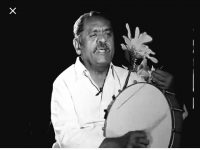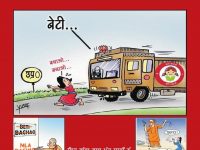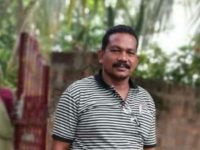(New Democracy News Service)
The evidence collected so painstakingly is doubtless both gruesome and undeniable. The struggles of civil rights activists countrywide as well as the pressure of democratic movements and people’s growing restlessness with obvious violence of state forces have also had some effect. Thus is it that while earlier Supreme Court judgements did not intervene much in the total flouting of laws by armed forces under cover of AFSPA (Armed Forces Special Powers Act), the Supreme Court Bench of Justices Madan B. Lokur and U.U. Lalit made some observations on 8th July 2016. Though not focusing on the growing demand for repealing AFSPA, the observations discuss its legal boundaries.
The case under consideration was of 1528 fake encounters in Manipur in a decade upto 2012. A petition had been filed for a SIT (Special Investigation Team) into these by hundreds of families of victims in Manipur under the banner of Extra Judicial Execution Victims’ Families Association. Of the cases mentioned, 62 were earlier investigated by the NHRC (which had concluded that half of the cases were fake encounters) and by a Court appointed Panel headed by former Supreme Court Judge, Justice Santosh Hegde. The Supreme Court Bench has now ordered the processing of the rest of the cases and a presentation of the data of the 62 cases so that it can decide which agency is to investigate them. But despite the massive number of cases as well as the devastating evidence, the Bench did not question the need for a law such as AFSPA. The AFSPA, enacted in 1958, has its origin in a colonial law made by the British to crush the Quit India Movement.
In their observations, the judges have not accepted the Central govt.’s contention that Manipur faced an unconventional war-like situation. The Bench held that the area is ‘internally disturbed’ and the people living there are citizens.
The observations of the Judges extend to several questions that are repeatedly raised by Central govts. over the years, irrespective of the ruling class party or formation in power, whenever the issue of lawlessness of the armed forces in AFSPA areas arises. They were also evidently raised in response to this petition. Thus the Judges have turned down the Central Govt.’s position that every armed person in the disturbed areas breaking prohibitory orders runs the risk of being considered an enemy. Not only can such a person not be branded as an ‘enemy’ or an active member of a banned or unlawful organization, “before a person is branded as a militant or terrorist or insurgent, there must be commission or some semblance of violent, overt act.” Further, even if the enquiry proves that the victim was an enemy, there must be a probe whether the force used by the armed forces was excessive or retaliatory “….killing an enemy is not the only available solution”. The Court has also observed, “There is a qualitative difference between the use of force in an operation and use of such deadly force that is akin to using a sledgehammer to kill a fly.” However, in all these utterances, the Bench has paid inadequate heed to the evidence placed before it, even though it has commented on it, noting that the petition says that arms are placed in the hands of dead victims to justify ‘encounter’ claims. The armed forces will definitely make up proofs of the culpability of victims as well as for the quantum of force used from the side of the state. The basic reason is not being addressed, i.e. the state’s own viewpoint that movements of nationalities for the right of self determination and for which the reasons are rooted in the history of the country, need to be crushed by brute force. It is this basic notion that the Bench has refrained from addressing, bypassing it by simply stating that the AFSPA area in Manipur is only ‘internally disturbed’ and not a war-like zone.
The Supreme Court Bench has struck a blow at the so called ‘immunity’ of the armed forces in AFSPA areas from ‘criminal liability’ and this can be an important method to bring accountability. The Court has observed, “there is no concept of absolute immunity from trial by a criminal court.” To the Central Govt.’s plea of resulting demoralization in the forces, it has been forced by the evidence before it to counter, “… spare a thought for the equally unsettling and demoralizing picture of a citizen living under the fear of the gun in a democracy” and “the alleged enemy is a citizen of our country entitled to all the fundamental rights under article 21.” Again, “It does not matter whether the victim was a common man or a militant or a terrorist, nor does it matter whether the aggressor was a common person or the state. The law is the same for both and is equally applicable for both” … “This is the requirement of a democracy and the requirement of preservation of the rule of law and the preservation of individual liberties.” It does stretch the imagination to think that the aggressor being a common person or state are ‘equally placed’ when the state stands charged to maintain the rule of law. When the armed forces of the state get away with gang rape after abduction of Manorama, alleged to be a Naga militant, when her body is found with bullet injuries in her private parts but the allegation is that she was shot while escaping and the lie cannot be nailed due to AFSPA, then immediate judicial action is needed and the state cannot be held “equivalent” to an individual aggressor. In the cases before this Bench was one of the 12 year old Manipuri boy dressed to go to school and sitting in the verandah of his home. He was dragged out by the security forces and shot dead in front of his pleading family. Even such cases have not moved any bench of the Supreme Court to review the AFSPA itself.
The Supreme Court Bench has stressed the need for a thorough enquiry into every death caused by armed forces in disturbed areas to assess “Any excessive or retaliatory force beyond the call of duty”. It had before it concrete evidence of 62 cases of which it had examined six in detail.
Under existing practice, the NHRC is supposed to get an enquiry conducted into every encounter death and satisfy itself about the evidence. On the one hand, the NHRC has submitted before this Bench that it does not have the power to force the state to appear before it or provide answers. On the other hand, NHRC and its state bodies, all appointees of the Govts. from amongst retired IPS officers and judges, do little to inspire faith that they would act as defenders of constitutional rights.
Revolutionary and democratic forces and people of Manipur, other parts of North East and of J&K have long been struggling for repeal of AFSPA. There is also the struggle of Irom Sharmila who is on indefinite fast till AFSPA is repealed and whose message is answered by repeated jail terms. There are thousands of “disappeared” persons in J&K as a result of this law. Women of J&K and North East have faced the entire spectrum of sexual violence at the hands of armed forces repeatedly and relentlessly due to the immunity from accountability. The experience of mass gang rape at Kunan Poshpora by 19 Rashtriya Rifles in 1991 and brutalization and murder of Manorama in 2004 by 17 Rashtriya Rifles personnel are only some among the worst. The atrocities under AFSPA pushed Anupam Lumb, the organization of Manipuri mothers, to demonstrate naked before the Army Headquarters in the state. Several children have been ‘encountered’ by the armed forces both in North East and in Kashmir as part of their bravery against an ‘enemy’.
It is only the total brutality of the armed forces in AFSPA areas as well as the pressure of movements that made Justice Verma, who had upheld AFSPA when he was Supreme Court Chief Justice, be party to the recommendation of the three member Verma Commission post 16 December 2012 that AFSPA be ‘amended’. Only a democratic mass movement can force repeal of AFSPA even while judiciary is forced to give concessions on defacto amendments in order to justify continuation of such a law. The observation of this Bench of the Supreme Court are said to be in accordance with 1950 judgement of the Court in the case of the Naga movement. Pressure of the armed forces on the successive Govts. is such that not one provision of AFSPA will be repealed without struggle.


